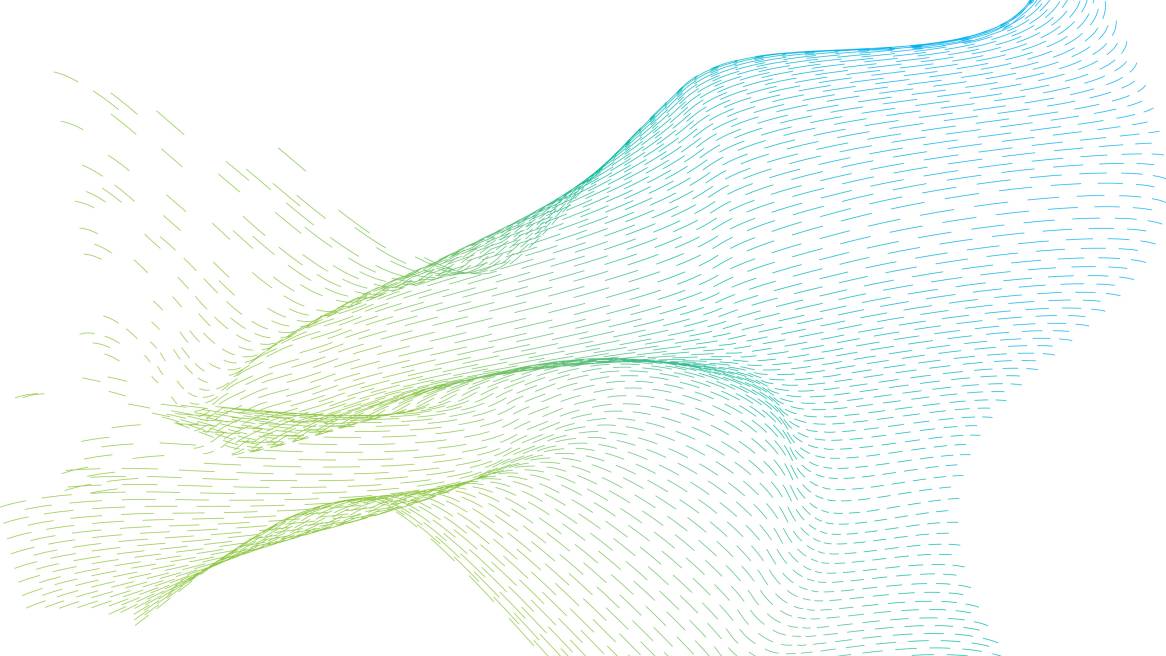The New I.Q.
Amplify your innovation quotient
Innovate or die. In 1997 American business writer Tom Peters coined this famous phrase. It was true then and rings even more true now. For CEOs worldwide it’s obvious: Innovation is critically important to an organization’s success, and it is imperative that it remains a key corporate strategy.
To move beyond survival and actually thrive, leading organizations know that innovation is the way to supercharge an organization and shift it to growth. In fact, 33% of global business leaders rank “the innovation of new products and services” as their companies’ top focus in the next three years, according to a recent study by McKinsey. But the reality these organizations confront, notes McKinsey, is that innovation faces ongoing challenges, such as increasing global competition, short-term priorities, and the need to integrate it into key organizational objectives. As a result it remains elusive, and leading organizations are looking to uncover every possible way to boost their I.Q.—i.e., their innovation quotient.
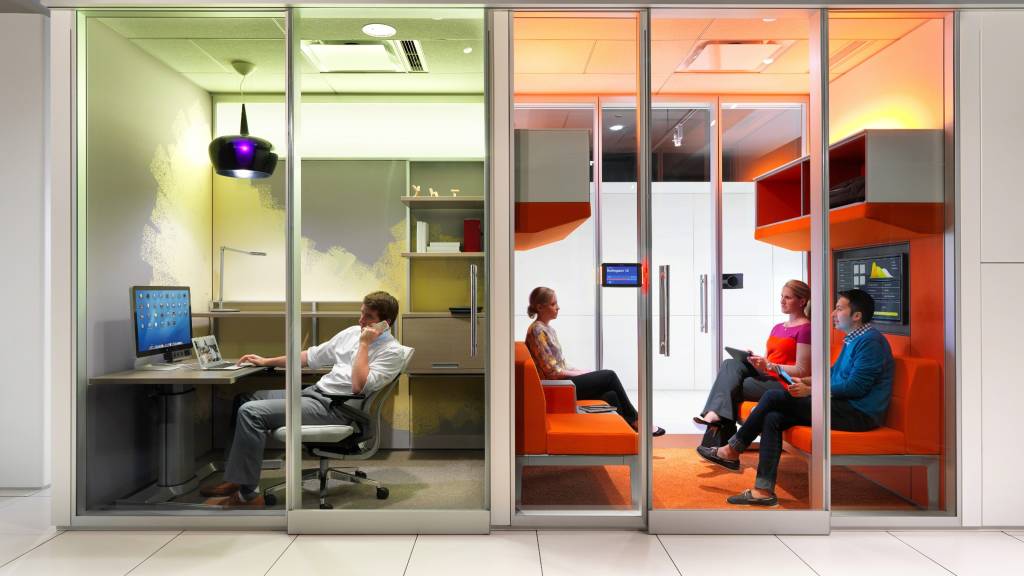
IBM’s recent Global CEO Study found that 69% of leaders believe they need to look outside their own organizations to prime the innovation pump. “Companies in all sorts of industries and markets are struggling to understand innovation, and looking for ways to drive more disruptive thinking,” says Sara Armbruster, vice president, Steelcase WorkSpace Futures and corporate strategy. “External partners can be a catalyst for new ideas, but organizations also need to build an internal culture of innovation.”
Innovation: A Physical Activity
As organizations seek to amp up their innovation quotient their biggest challenge is more likely information overload rather than a dearth of data on the process itself. There are over 55,000 books on the subject listed on Amazon, written by innovation gurus such as Clayton Christensen, Chip Heath, Tom Kelley, Larry Keeley and Roger Martin. Articles, speakers, consultants and workshops abound. Little wonder leaders feel daunted by the prospect of developing the right strategy to increase their innovation.
Despite the plethora of information about the how, what and why of innovation, one topic that gets far less attention is where.
“Ideas get even better when we have a team that is not only diverse professionally or ethnically, but also geographically.”
“Many organizations overlook the connection between the physical environment and innovation,” notes Armbruster. “But space matters. It shapes the behavior of people, and creates the ‘stage’ on which innovation can be propelled.”
“Innovation is a physical activity,” notes James Ludwig, Steelcase vice president of global design. “It’s dependent on human interaction, exploration and experimentation. That means the places that bring people together, physically and virtually, are critical to innovation outcomes.”
As a result of the synthesis of over 15 years of multidisciplinary global studies, Steelcase has found that the physical environment has the power to augment–or undermine—the human interactions essential for success.
Sir Ken Robinson, an internationally recognized leader in the development of creativity, innovation and human resources in education and business, agrees. He asserts that culture is a driving force of innovation and everyone in the organization needs to be involved. “If you want a culture of innovation, there are certain conditions for it,” Robinson says. “The culture of an organization is about habits and habitats—creating a habitat where people feel their ideas are welcomed, empowered and rewarded, and creating a physical environment that develops new ideas.”
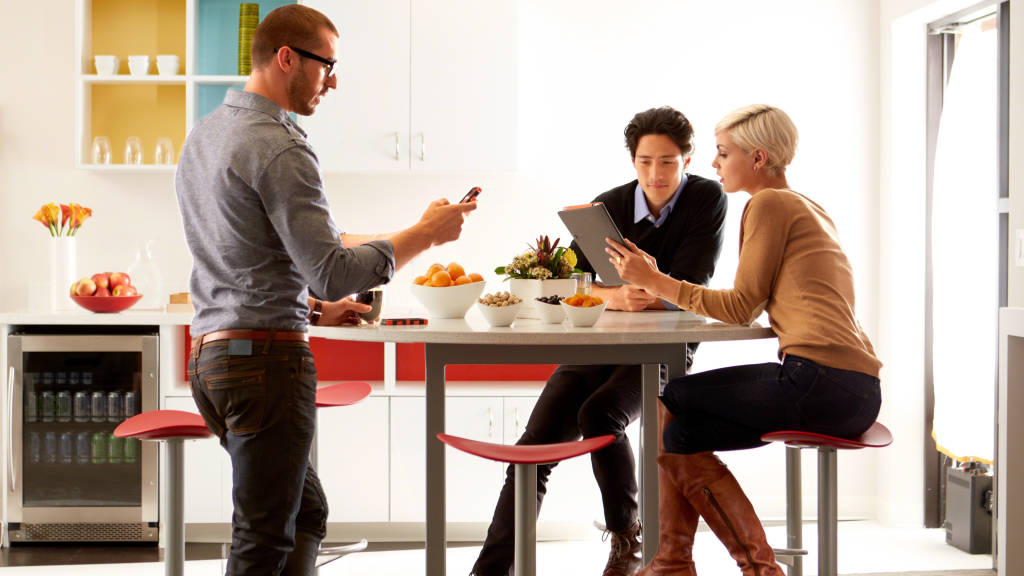
Steelcase researchers, designers and marketing professionals explored these habits and habitats in a series of in-depth explorations. They also collaborated with leading think tanks to study innovation as the driving force of the 21st century from multiple perspectives. Partnering with the Berlage Institute in Rotterdam, they explored how physical environments can augment creative thinking. The company also conducted primary research in its corporate development center by staging a range of behavioral prototypes in which real working spaces were built out and employee behaviors were observed and evaluated using a variety of ethnographic techniques. Additionally, the team benchmarked six powerhouse organizations—Apple, Nike, IDEO, Stanford d. school, Nokia and Gravity Tank—top brands known around the world as leading innovators.
“Space matters. It shapes the behavior of people and creates the ‘stage’ on which innovation can be propelled.”
Sara ArmbrusterVice President, Steelcase WorkSpace Futures and Corporate Strategy
The Steelcase team studied a variety of innovation models, from internally focused to external partnerships. Throughout these diverse explorations they observed that most organizations approached innovation spaces with the bias that teams need to work in the same physical space. “That was a key takeaway from our studies—other organizations had defaulted to the position that innovation can happen in only one place, with co-located teams,” notes Steelcase Director of Design Cherie Johnson. “But our experience at Steelcase has been quite different: We feel that in a global economy, ideas get even better when we have a team that is not only diverse professionally or ethnically, but also geographically. People who come to the innovation process immersed in the sights and sounds of other cultures bring a deeper layer of insight to the problem at hand.”
The team went on to challenge the conventional belief that innovation happens almost exclusively among teams working in the same location. Instead, they embraced a belief that the physical environment can be designed to bring global teams together, and with greater results. “We think of our global teams as nodes on an innovation network,” observes Steelcase Vice President of Marketing Allan Smith. “The physical environment can be designed to enhance the capabilities of each node, regardless of location.” Ultimately, an intentionally designed workplace can amplify the performance of individuals, teams and the global enterprise, and lead to sustained innovation.
An Innovation System
The desire to innovate is universal across business and industries, and, in many ways it’s become the critical issue of our time. One important idea Steelcase has embraced is that innovation is a system, not a linear process. You can’t just come up with a good idea and pass it over to another team to keep it moving forward. Innovation is more like a complex adaptive system that’s based on relationships, patterns and iteration. All of the pieces of this system interact and connect with one another, sometimes in unpredictable ways, and we believe that the physical environment is one node on a global innovation system.
A really important attribute of innovation spaces is to encourage cross-pollination, sharing of ideas and making thinking visible across different disciplines in the system. Sometimes people get really passionate about an insight or project and they’re so focused on their content that it’s hard to step back and say, “How do I share this? How do I make this visible? How do I get other people equally passionate and excited about these rich insights?” Because, no matter how important the idea might be, if we can’t interact within the system, communicate and help other people engage around those insights, then innovation can’t happen.
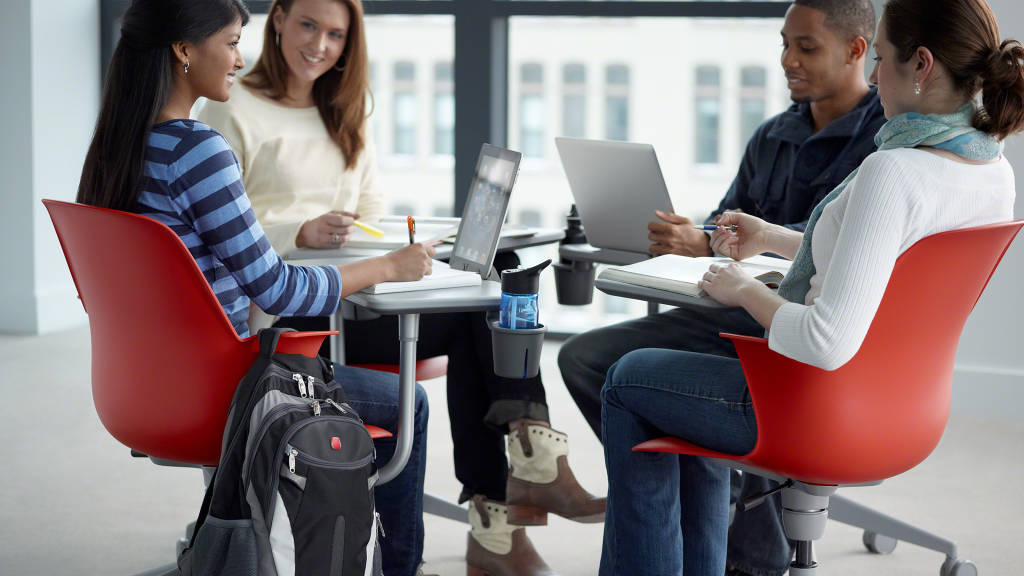
For an innovation system to flourish, people need to live in their content and be immersed in it. So we intentionally create spaces that that make it easy for people to swim and play in their own content, as well as content that may be evolving around them. Because a system can be unpredictable, you never know where connections may occur, or where there’s a really interesting question that one person is working on that might spark an idea in someone from a different discipline who’s working on a totally different issue. It may seem like a paradox, but we want to be very intentional about designing spaces that create serendipity—unplanned interactions, so people will understand their own content but also have a larger sense of the whole.
Many organizations struggle to figure out how to bring the right people together in their innovation process. Our bias is that a system is healthier when it is diverse, and so we are committed to bringing global teams together in spaces that are enabled with human-centered technologies, that minimize distance. Gender, ethnic and professional diversity are all important. But geographic diversity allows a team to connect with an even greater range of experiences and insights. That ultimately makes the innovation system stronger and better able to respond and adapt to a changing world.
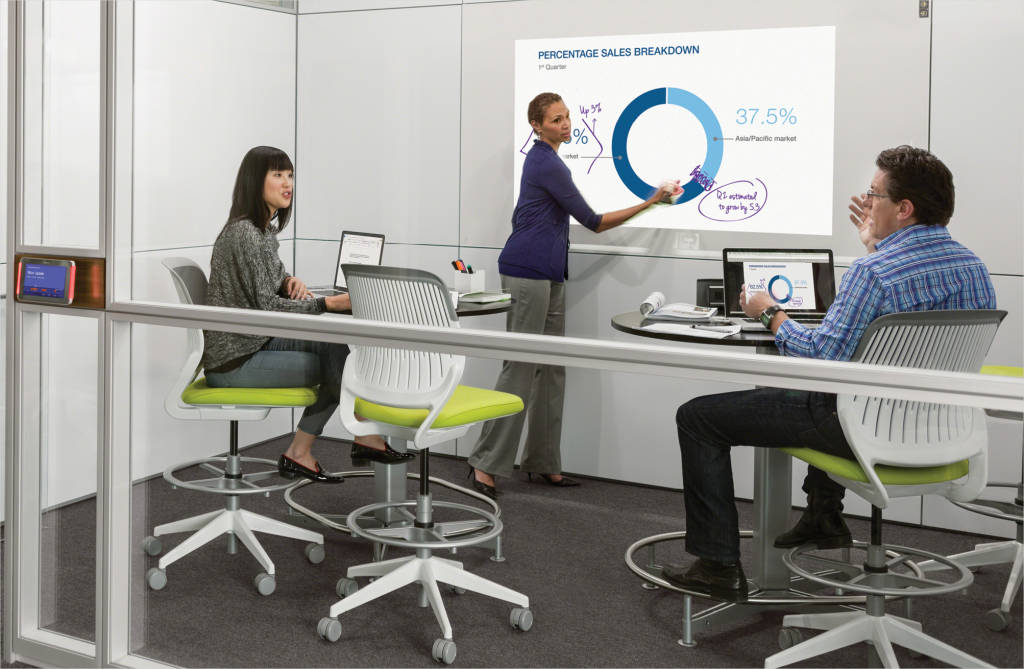
Insights on Innovation
In the synthesis of its research, the Steelcase team identified five overarching insights about the physical nature of innovation and the human behaviors that foster it:
Innovation is a direct result of creative collaboration. Creative collaboration is about forging something new—an innovation—and requires a team with a wide range of professions, diverse backgrounds and experiences whose economic function is to create new ideas, new technologies or creative content. Human interaction drives creative collaboration, and the physical environment has the power to augment and enhance those interactions, making them more valuable.
“Creative collaboration is a high-order process that helps foster innovation, and collaboration is about creating a shared mind,” says Frank Graziano, part of the Steelcase team exploring innovation.
Innovation is ultimately about learning, and it’s predominately a social process. People learn by working with others in a variety of capacities, and co-creating new things together is the highest form of learning and the highest form of collaboration.
Innovation requires a connection between sociology and technology. Technology is a powerful configuring force in the ways we work because we use it to drive information and knowledge. When it becomes unobtrusive and intuitive for users, technology allows people to share information equally and democratically, improve transparency and more rapidly gain a shared understanding and alignment.
“In the past we thought of technology as a way to free us up for more leisure time,” notes Ludwig. “Today, instead of it freeing us from work, it’s freeing us to work. It enables people to do more, and frees us up to think big.”
Innovation is a team sport that, paradoxically, requires focused individual work to fuel collective creativity. With so much focus on the social aspects of innovation, organizations sometimes forget about the power of individual, concentrated work. In order to be a strong contributor to a team, individuals need the time and place to think and let ideas germinate. Physical environments that foster innovation provide a balance or both “WE” spaces that support creative collaboration as well as “I” spaces that support individual, focused work.
“As we began to understand the rituals of collaboration, we saw that contemplation and collaboration are codependent,” explains Graziano.
Collaboration today is both physical and virtual. To truly take advantage of the diverse backgrounds and experiences of a distributed team interactions should be real-time for the team to be most engaged and productive. It’s not just about passing work back and forth between time zones to take advantage of time differences and speed up development. Creative collaboration requires trust, which is built by teammates working together in real-time. The challenge is to eliminate “presence disparity”—those moments that occur when communication and collaboration are drastically reduced during conference calls or in poorly designed videoconference experiences.
Creative, generative collaboration happens in small groups. It often takes place in one-on-one or three-person subsets of the larger team. Even the larger team size should be carefully managed. The trick is to get the right set of skills and inclusion on the team, without weighing it down.
“It’s important to balance diversity and scale. While a diverse set of experiences and skills is important, teams that are too large choke on their own complexities,” says Graziano. “We have a general rule of thumb for the ideal team size—6-8 people—and we’re also big believers in the power of dyads and three-person teams. We say, go for the most diversity you can get with the smallest scale.”
From Smokestacks to Ideas
After years of extensive research Steelcase embarked on creating its own innovation center. Armbruster, along with co-sponsors Ludwig and Smith welcomed their teams to a former manufacturing facility, which was reimagined and redesigned to reflect the insights gleaned from their research.
The adaptive reuse of an underutilized manufacturing space is a metaphor for the changes Steelcase and other legacy industries have faced. “In the industrial revolution, one of the signs of corporate pride was the number of smokestacks rising from its buildings. Today it’s the number of new ideas,” notes Ludwig. “It’s ironic that innovation in manufacturing enabled us to free up this space for a different kind of innovation.”
The creation of a new innovation center was driven by the organization’s need to effectively compete in an interconnected and interdependent world. “Like every other mature industry we have a business need to accelerate innovation,” explains Smith. “We need to generate more creative ideas faster and bring them to market quickly. We decided we needed a physical destination that would foster the behaviors of an innovation culture and engage top talent in the process.”
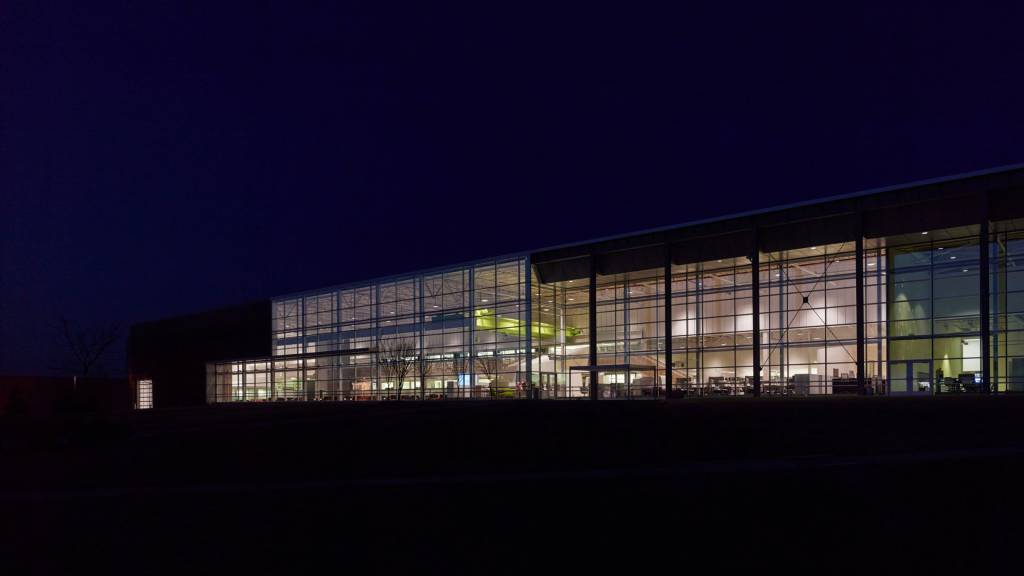
“We needed a physical destination that would foster the behaviors of an innovation culture.”
“It was very intentional that we had just celebrated our 100 year anniversary,” explains Ludwig, “and we asked ourselves, what will be the parameters for innovation in the next 100 years? ”
“Innovation is a core business strategy for us,” adds Armbruster. “We are asking people to embrace behaviors that lead to innovation, and that is hard work, especially in a globally integrated enterprise when teams who need to work together are not all located in the same place. It’s important to balance the social aspects of innovation with the spatial and informational. The 325,000-square-foot/30 200 meters squared space is home to 267 people at the company’s Global Headquarters in Grand Rapids, Mich., and also serves teams who are distributed around the globe. “Another key business strategy is to become a more globally integrated enterprise which means we have to leverage our talent around the world. We need our spaces to enable distributed teams to collaborate in real time,” adds Smith.
The Steelcase Innovation Center
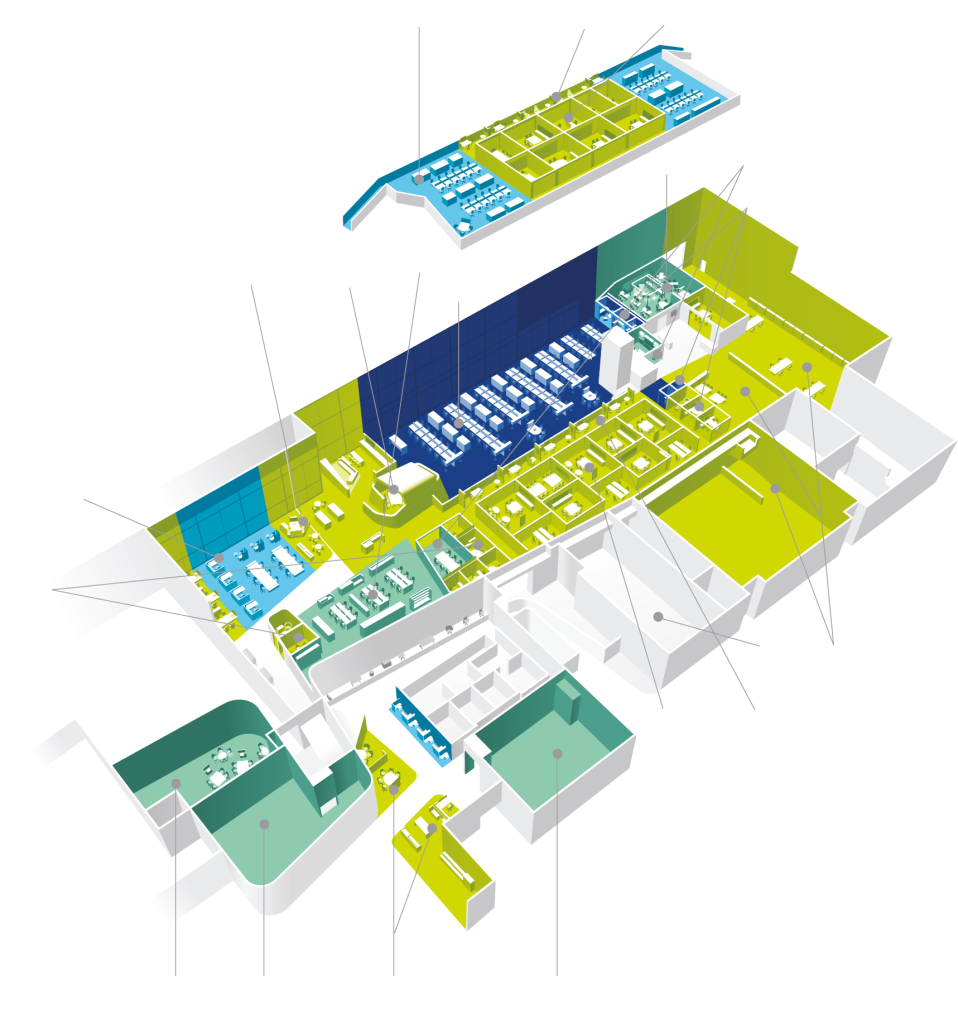
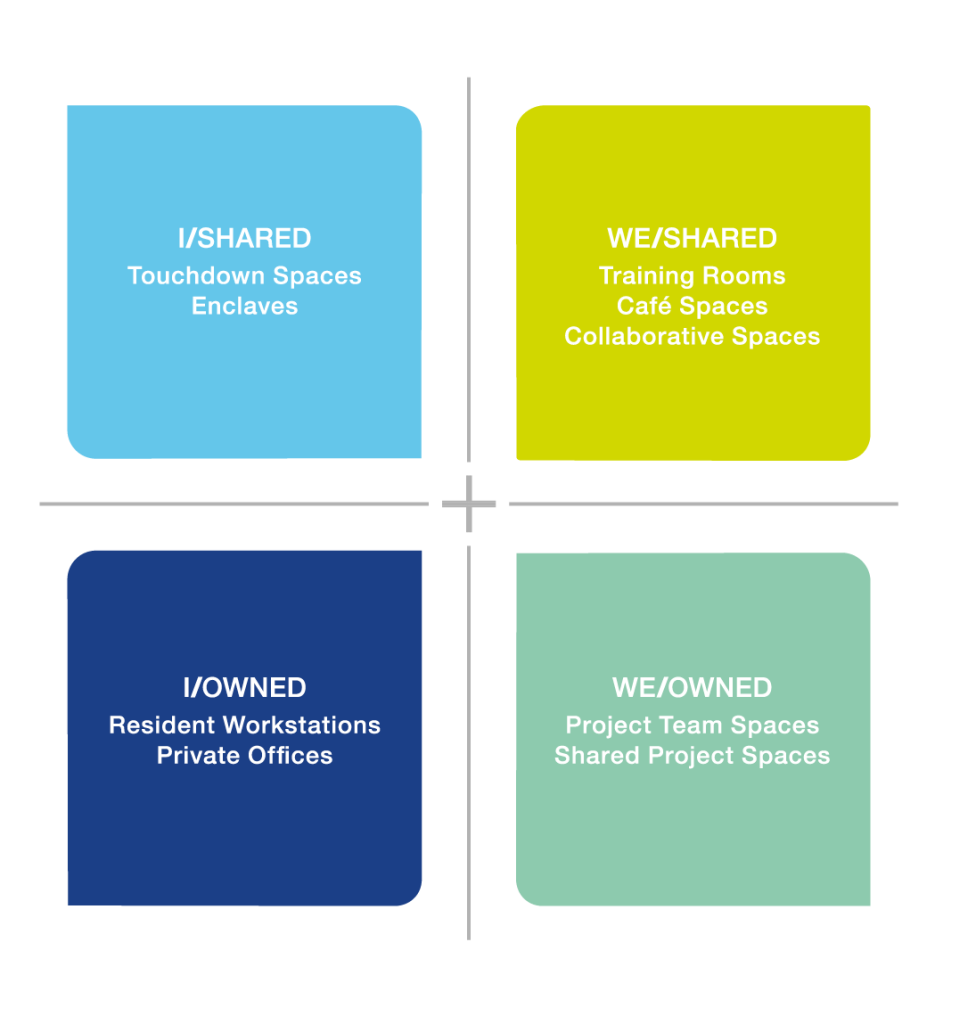
TECHNICAL PROFESSIONAL HUB
Benching workstations provide a shared home for engineers, many of whom are assigned to multiple project teams. Having a setting where it’s easy to exchange technical information and knowledge with others in the same profession allow workers to drill deep into
each other’s expertise, increasing the likelihood that specialized insights get applied broadly across multiple projects in different product categories.
STRATEGY ROOMS
The design and marketing teams each have a strategy room that functions a lot like a clubhouse or den. It’s an intimate, shared place to meet and keep information that’s particular to each discipline. These rooms are well equipped for whiteboarding, information displays and videoconferencing.
MOBILE NEIGHBORHOODS & ENCLAVES
Open-plan neighborhoods and 16 enclosed enclaves, all conveniently adjacent to project studios, provide individual or small group spaces for workers away from the activity of the project studios. each enclave is equipped for collaboration via videoconferencing, online chats and digital file sharing. The behavioral prototype proved that enclaves without these tools simply don’t get used.
EXPLORATION SHOP & PROTOTYPE STUDIO
Because rapid iteration of ideas is fundamental to innovation, product prototyping areas are directly adjacent to the product studios and visible through glass walls. This is where early concepts can be quickly roughed out from scratch. In the adjacent prototyping studio, ideas are turned into models. Transparency and proximity help teams develop trust and early alignment.
GUEST INTERACTION ROOMS
Separate, closed rooms, right outside the innovation center, allow teams to host external partners, customers and designers and engage them in the innovation process. This allows ideas to incubate inside the innovation center, and then be shared externally when appropriate. These spaces can be adapted to support a range of experiences. These rooms also have videoconferencing capabilities to support virtual presence of remote teammates.
FRONT PORCH
Just outside the project studios , front porches serve as touchdown spots where small groups or individuals can step away for focused work, while still being visually accessible to the team. A technology screen integrated in each front porch provides constantlystreaming data about the project, so anyone can get acclimated quickly before entering the studio.
NEIGHBORHOOD CAFÉ
Socialization and respite are the priorities of this large communal zone for refreshment and informal engagement. Whether coming here to chat with a coworker or relax and think, this place recognizes the human side of work, including the importance of building the social trust that’s the currency of successful collaboration. Workers can enjoy the seasons, either in front of the fireplace or on the adjacent outdoor patio in the summer. Distributed teammates can join the conversation with telepresence at the media bar.
LABS
While project studio ownership rotates after a project ends, three specialized areas within the space are permanently assigned to teams who serve as consultants to the project teams, but typically aren’t assigned to one. A variety of furniture applications within each area supports a range of work processes and postures.
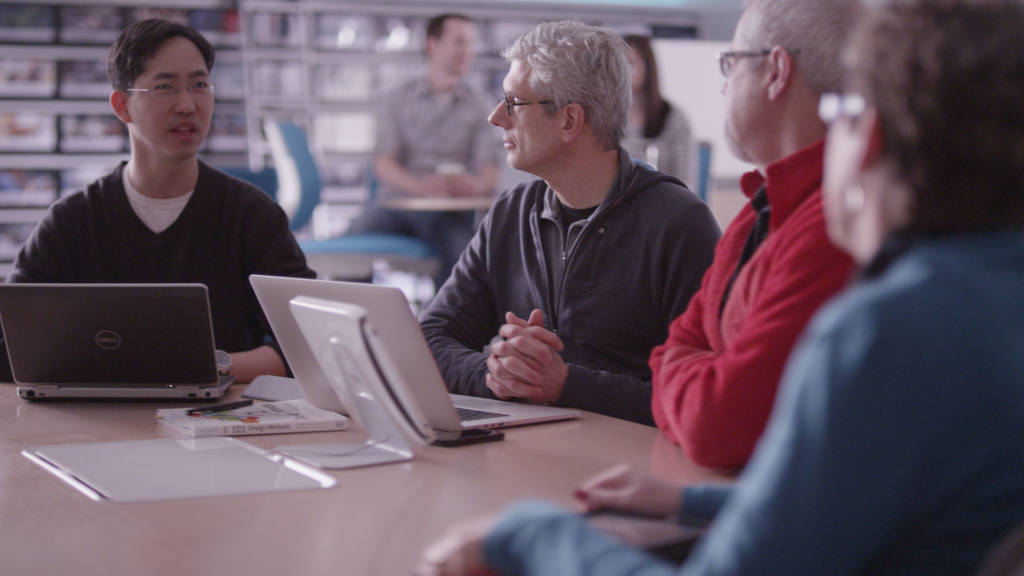
telepresence in the Insights Lab daily to collaborate with colleagues globally.
Global Collaboration: Erasing Distance
To drive growth and leverage the strength of a globally integrated organization, it was critical that the team solved for new ways of working, Steelcase knew it could develop more innovative ideas if it effectively engaged a diverse group of thinkers, located around the world. The new innovation center needed to consider the needs of employees who were joining the team virtually and try to minimize or eliminate any disparity they might experience. All of the key ingredients of global creative collaboration needed to be thought through, from IT systems to organizational culture.
“We needed to make distance evaporate.”
“We approached the project from a user-centered perspective on what we need as an organization that will help us innovate,” explains Patricia Kammer, one of the researchers on the project. “A big question was how do we design space in a way that will encourage cross-pollination, sharing of ideas and making thinking visible across different disciplines?”
“From the start, this project was about connecting our global network. The new space would be just one node on a larger network,” says Kammer.
Today 75% of Steelcase’s product development projects are global, with design studios in Europe, Asia and North America, plus external partners. John Small, Steelcase’s director of design in Europe, and John Hamilton, Steelcase’s design director for Asia Pacific, lead multi-national teams—French, German, Spanish, American and Chinese team members work in collaboration with each other as well as the research and marketing teams . It’s important to put everyone on a project team “in the same room” virtually whenever needed, notes Small. Team interactions also increase the likelihood that individuals will reach out to each other directly to solve problems. Teams are in touch daily via telepresence as well as through other technology tools to collaborate. “Distance shouldn’t be considered a barrier,” Hamilton says.
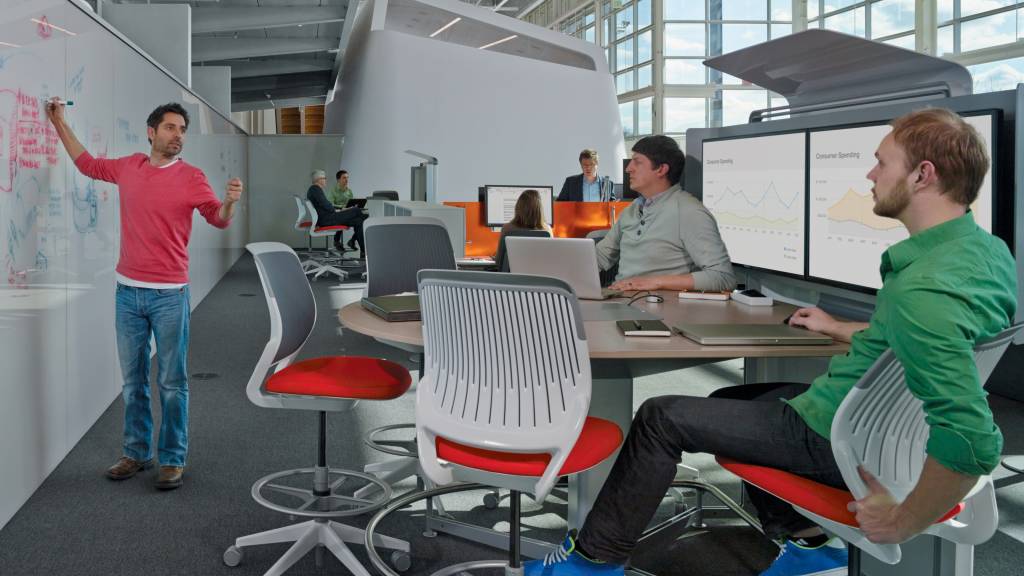
A Palette of Place, Posture and Presence
The new innovation center offers a range of spaces that people can choose from, depending on the type of work they need to do throughout the day, and encourages them to move throughout the space rather than stay in one place. Everything is transparent: glass walls allow workers to see their ideas progress from concept to reality. Walls have become the new worksurface, and information lives on vertical planes where everyone can see it. Areas for respite, both indoors and outdoors, allow employees to get away without going away. The space tells workers that it is ok to stand, lean, perch, lounge or work in any posture that is comfortable and helps them to stay energized and focused. The environment encourages people to experiment and try new things.
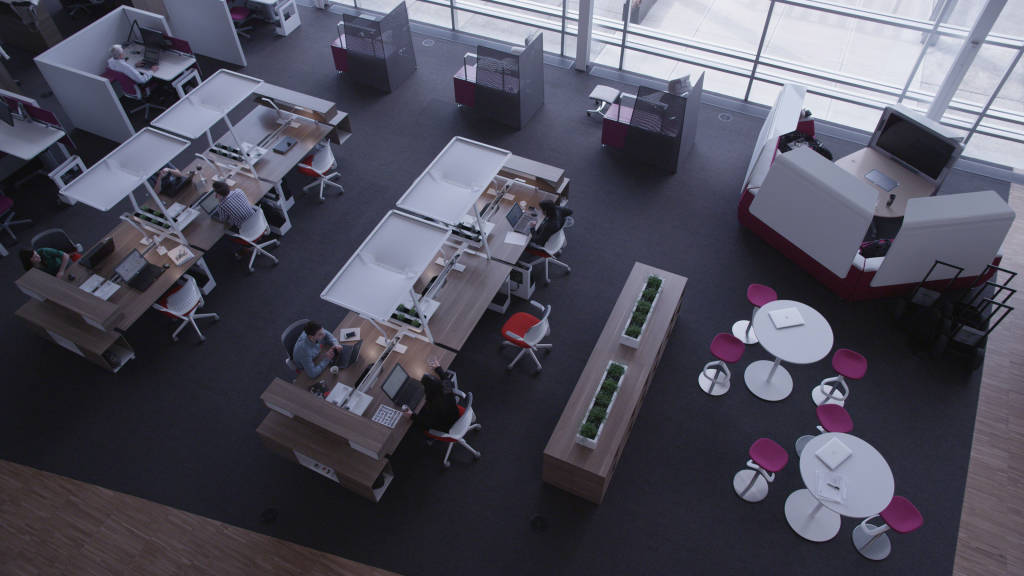
“We wanted to have a place where we could make and break things,” says Ludwig, not entirely tongue-in-cheek. “We wanted to help move ideas from the computer screen to prototypes as quickly as possible. Design is a very physical process.”
“The space is not overly prescribed,” says Johnson, whose design team partnered with Shimoda Design group for the interior architecture. “Forces of change happen over time. This is a simple architecture that gives humans access to natural light, daylight views, the simplicity of a raised floor that has modular power and under-floor air delivery. It’s a simple floor plate designed for evolution, so we can adapt it and allow the building to ‘learn’ with the people who use it.”
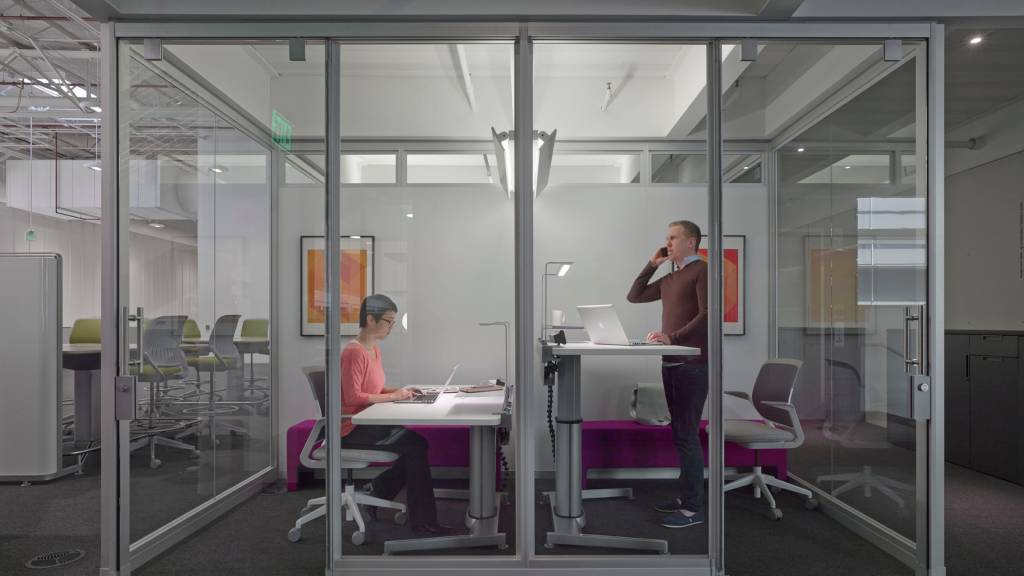
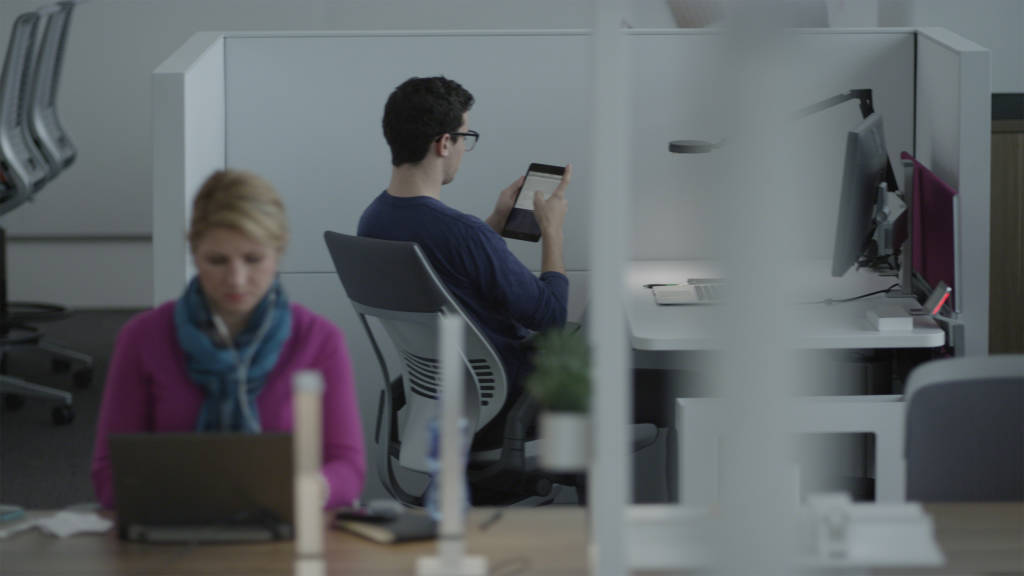
Homes for Project Teams
As the team considered how to best support a culture of innovation, one of the paradigms they needed to shift was to move from thinking about home bases for individuals to homes for project teams. This meant they focused on spaces that would support team-based work, flanked by front porches to support individuals and small groups and back alleys where work moves from concept to reality. The project studios, at the heart of the center, were allocated 40% of the overall footprint and are the places that product development teams call home.
The studios have been carefully planned to support remote team members as well as those who are physically present. “During the behavioral prototype stage, we saw that people tend to behave in a very forced and
formal way during telepresence meetings. They sit up very straight, as if they’re TV news anchors, and are reluctant to move,” explains Ritu Bajaj, a Steelcase researcher. “Having a variety of applications in the room, such as café tables and lounge settings, enhances informality, which makes for much better collaborative experiences.”
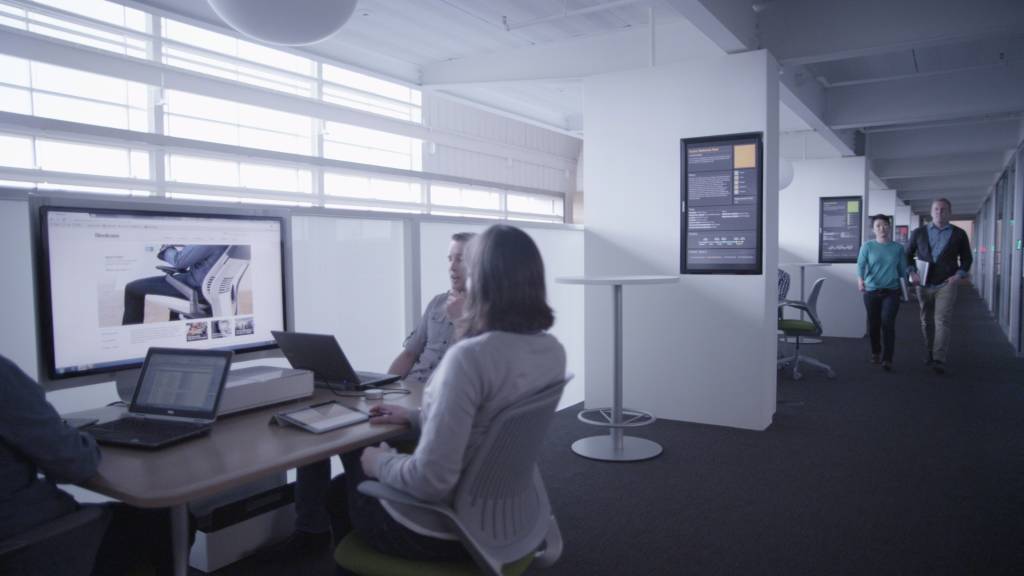
Every studio features videoconferencing in a multiscreen format, which assures people can see each other and their content. The room supports different configurations and views, including close-up and one-on-one exchanges where gestures and facial expressions transmit clearly, improving understanding and contextual awareness. The studio layout assures everyone can be on camera during videoconferences, and ceiling-mounted speakers ensure audio clarity. There are zones in the studios where workers can break away from active collaboration but stay nearby to rejoin as needed.
Project studios are configured in a variety of sizes—small, medium and large. The research confirmed that small teams don’t work well in large rooms: There’s too much distance between people and walls. This is an issue because the vertical plane is important for communicating and displaying information. Information persistence—analog and digital—facilitates understanding and creates all-important team memory.
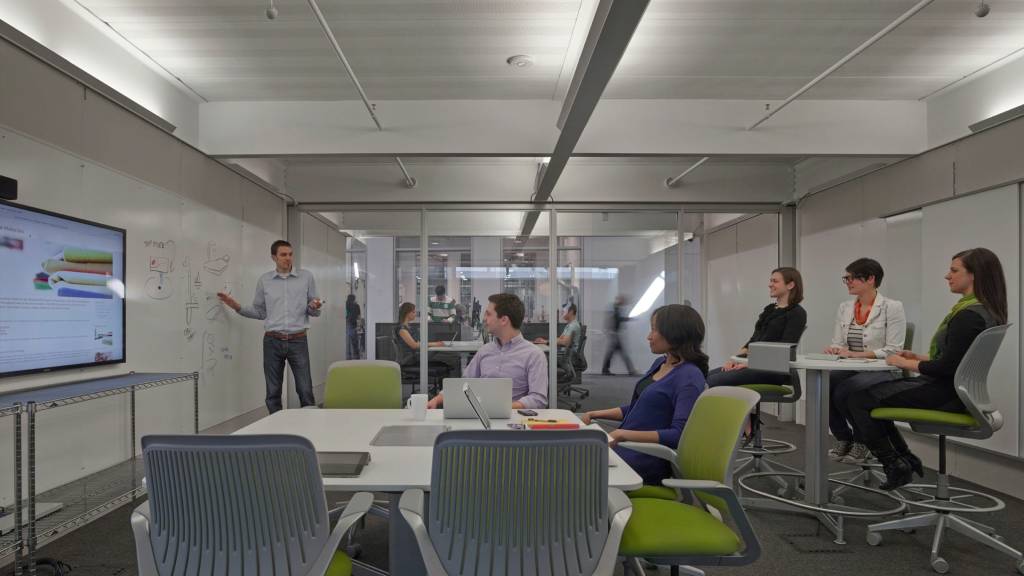
As team members carry more of their information on small, mobile devices, the vertical planes needed to become zones that host technology to support large-scale display so teams can gather around the content, understand it together and build on it. When teams are working this close to these vertical planes, acoustical privacy becomes critical. And as projects are completed and new teams form, it was important that the vertical planes could be easily reconfigured for different size spaces.
All of the spaces offer a palette of posture—standing, lounging, perching and walking. This is particularly important during very long telepresence sessions, which can be energy-draining. Steelcase researchers observed “video fatigue” as a common malady among distributed teams and found spaces that encourage movement and a variety of postures could help ease the pain.
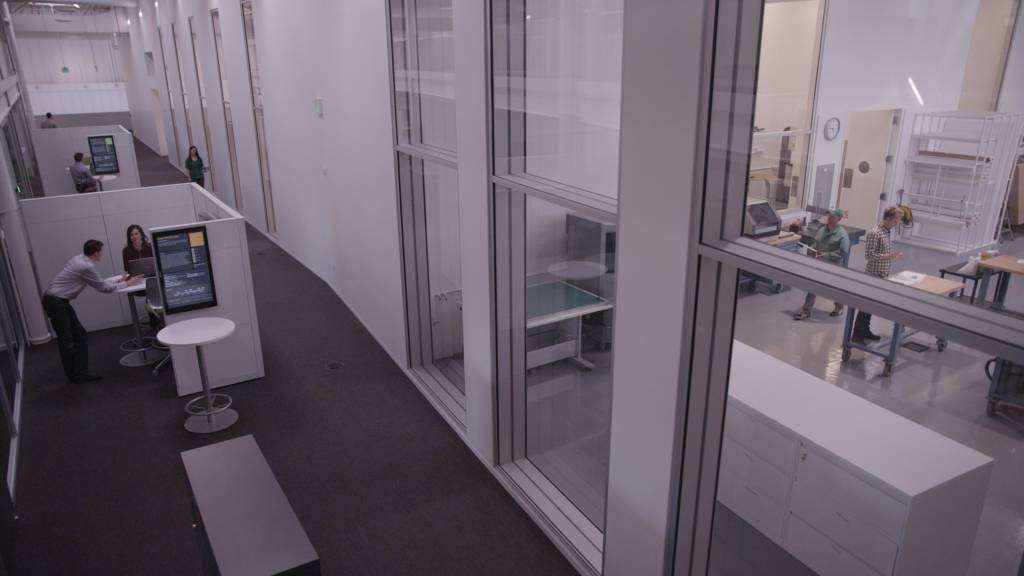
Because different teams work in different ways, each has the opportunity to select from a variety of furniture applications when they move into a studio. In this way, they can configure the space to their activities, preferences and tools, celebrating their processes and claiming the spaces as theirs for the duration. Because the studios are elastic and continuously evolving spaces, when the next team moves in, they can choose what’s best for them.
Designers like to think with their hands, so prototypes populate the entire innovation center. Prototypes give ideas physicality, so each project studio has ample space to stage, debate and store pieces, parts and even whole models. Teams can literally put things together and pull them apart to move ideas forward.
“We’ve seen project spaces that are so pristine that they discourage the ad hoc nature of creativity,” says Kammer. “Innovation through creative collaboration, if done authentically, is a visually and even socially messy process.”
“As workers live and work in this new space, as new technologies emerge, the innovation center’s agile design will also adapt.”
Cherie Johnson Director of Design
An Iterative Process
The innovation center, like all Steelcase spaces, is a working prototype, in which the organization implements its latest ideas, learns what works and what doesn’t, and modifies the space accordingly. It’s an iterative process that is at the heart of design thinking, and the very act of innovation itself. This space is designed to iterate and allow learning, which is the essential ingredient for innovation. Over the coming years, as workers live and work in this new space, as new technologies emerge and are adopted, the innovation center’s agile design will also adapt.
A principle that will remain constant throughout any future evolutions is that innovation is dependent on human interactions. The physical environment has the power to augment those interactions that are essential for innovation, and will be increasingly global as distance gradually evaporates. Places will serve as the stage that brings together an organization’s strategy, brand and culture and makes them tangible and actionable for employees. Intentionally designed places can amplify the performance of individuals, teams and the entire enterprise.
7 Habits of Innovation
In preparation for their move into Steelcase’s new innovation center, a cross-discipline team developed a manifesto of sorts for new residents. The aim: accelerating insights to innovation.
1. RAISE CENTRAL QUESTIONS
Ask big questions, and then start digging in. It can be intimidating to work in uncharted territory without familiar paths to follow, or with no right or wrong answers. But accept this ambiguity as a part of your process and go with it. Question your assumptions and ask crazy, lofty questions… then explore these mysteries by breaking them down into focused pursuits.
2. BE OBSERVERS, LISTENERS, AND LEARNERS
We are all explorers of ideas, and we need to uncover the edges of what we already know so that we’re able to step into new territories. So roll up your sleeves, get dirty and take risks to venture into the unknown! Covering a lot of ground quickly will help you uncover the most exciting opportunities to take further.
3. MAKE IDEAS VISIBLE
Get ideas out of your head—make them visible! Write it, doodle it, hack it, build it, act it out, make a video, whatever. Ideas are useful only to the extent that they can be shared, evaluated and built on by others. If you have trouble finding a way to express or visualize your idea, team up with someone who can help you get your ideas out in the open.
4. SHARE AND CO-CREATE
Reach out to foster connections and meaningful relationships both inside and outside of the company. Inspiration, opportunities and partnerships can come from anywhere; they feed your intellectual appetites and assemble a more dynamic community. So, spark some interesting and even provocative discussions by inviting more diverse voices into your conversations. Mix it up—great ideas can come from unexpected places!
5. MAKE OTHERS SUCCESSFUL
A great measure of your success is how well you have made others successful. Build an environment of trust and respect around you. Recognize your colleagues, encourage their contributions and build on their ideas. Celebrate courage, and create more opportunities for the people around you to shine.
6. BE AN OPTIMIST
Enthusiasm is contagious. We all share an innate optimism in the very work that we’re doing; our collective efforts create solutions that can improve people’s lives and build a healthier world. Openly embrace this enthusiasm, and listen to constructive criticism—it makes ideas stronger, and doing so also gets others excited about what you’re creating together.
7. FAIL FASTER TO SUCCEED SOONER
Learn, rinse, repeat. Don’t wait to try and get everything right the first time. Even if something doesn’t work as expected, we still learn from it. Rapid prototypes gradually grow your understanding of the big problems that we’re trying to solve, piece by piece. And the more things you try out, the more you learn—faster!

